UF Health Expert Answers FAQs on Ear Foreign Bodies
Children seem to have a fascination with putting objects into their ears. Whether it’s a marble, bead, cotton swab, pencil or even a bug, objects can easily…
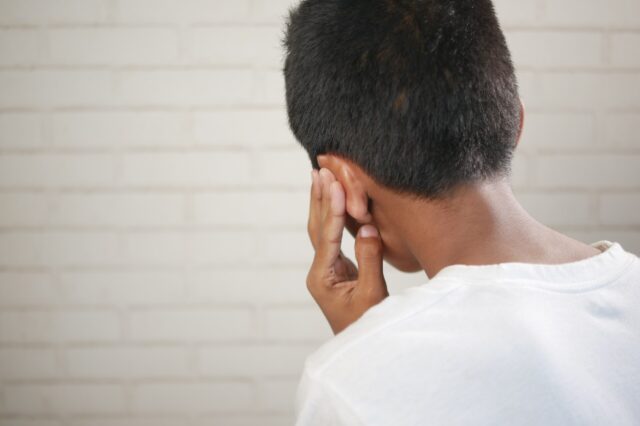
Update your location to show providers, locations, and services closest to you.
Burns commonly occur by direct or indirect contact with heat, electric current, radiation, or chemical agents. Burns can lead to cell death, which can require hospitalization and can be fatal.
First degree burn; Second degree burn; Third degree burn
There are three levels of burns:
Burns fall into two groups.
Minor burns are:
Major burns include:
You can have more than one type of burn at a time.
Major burns need urgent medical care. This can help prevent scarring, disability, and deformity.
Burns on the face, hands, feet, and genitals can be particularly serious.
Children under age 4 and adults over age 60 have a higher chance of complications and death from severe burns because their skin tends to be thinner than in other age groups.
Causes of burns from most to least common are:
Burns can be the result of any of the following:
You can also burn your airways if you breathe in smoke, steam, superheated air, or chemical fumes in poorly ventilated areas.
Burn symptoms can include:
You may have an airway burn if you have:
Before giving first aid, it is important to determine what type of burn the person has. If you are not sure, treat it as a major burn. Serious burns need medical care right away. Call your local emergency number or 911.
MINOR BURNS
If the skin is unbroken:
Minor burns will often heal without further treatment. Make sure the person is up to date on their tetanus immunization.
MAJOR BURNS
If someone is on fire, tell the person to stop, drop, and roll. Then, follow these steps:
You will also need to prevent shock. If the person does not have a head, neck, back, or leg injury, follow these steps:
Continue to monitor the person's pulse, rate of breathing, and blood pressure until medical help arrives.
Things that should not be done for burns include:
Call 911 or the local emergency number if:
For minor burns, call your health care provider if you still have pain after 48 hours.
Call a provider right away if signs of infection develop. These signs include:
Also call a provider right away if symptoms of dehydration occur with a burn:
Children, older people, and anyone with a weakened immune system (for example, from HIV) should be seen right away.
The provider will perform a history and physical examination. Tests and procedures will be done as needed.
These may include:
The outcome will depend on the type (degree), extent, and location of the burn. It also depends upon whether internal organs have been affected, and if other trauma has occurred. Burns can leave permanent scars. They can also be more sensitive to temperature and light than normal skin. Sensitive areas, such as the eyes, nose, or ears, may be badly injured and have lost normal function.
With airway burns, the person may have less breathing capacity and permanent lung damage. Severe burns that affect the joints may result in contractures, leaving the joint with decreased movement and a reduction in function.
To help prevent burns:
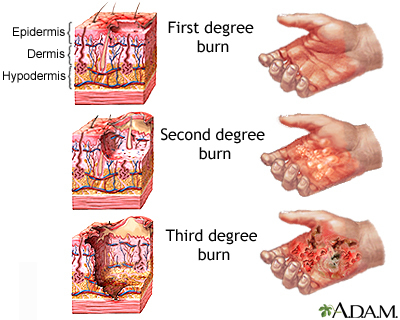
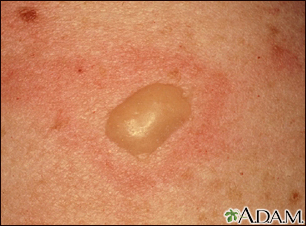
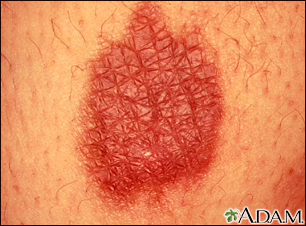
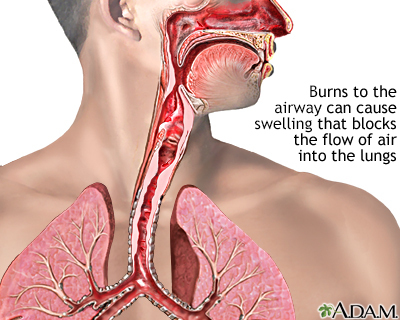
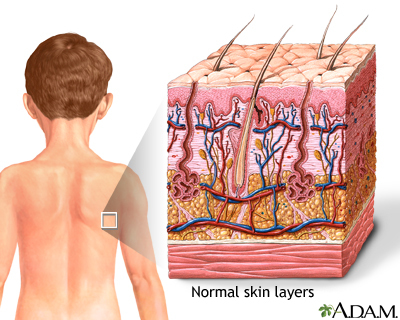
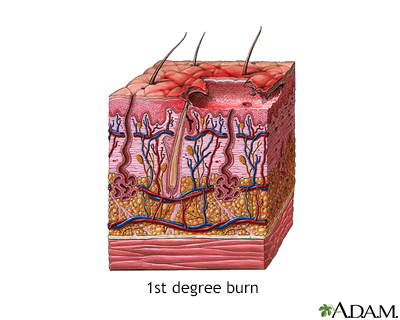
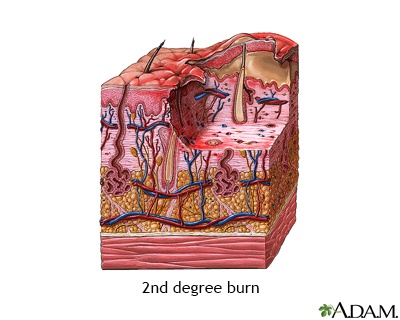
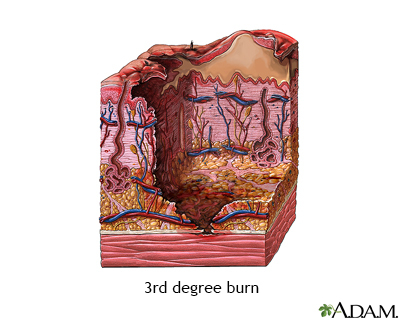
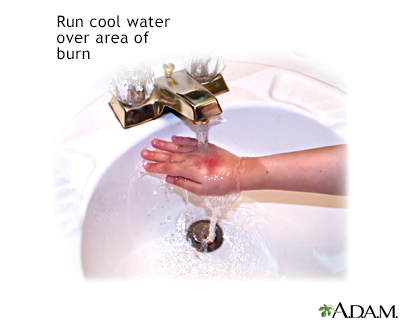
Rybarczyk MM, Kivlehan SM. Thermal injuries. In: Walls RM, Hockberger RS, Gausche-Hill M, Erickson TB, Wilcox SR, eds. Rosen's Emergency Medicine: Concepts and Clinical Practice. 10th ed. Philadelphia, PA: Elsevier; 2023:chap 54.
Voigt CD, Celis M, Voigt DW. Care of outpatient burns. In: Herndon DN, ed. Total Burn Care. 5th ed. Philadelphia, PA: Elsevier; 2018:chap 6.
Wolf SE. Burns. In: Townsend CM Jr, Beauchamp RD, Evers BM, Mattox KL, eds. Sabiston Textbook of Surgery. 21st ed. St Louis, MO: Elsevier; 2022:chap 20.
Children seem to have a fascination with putting objects into their ears. Whether it’s a marble, bead, cotton swab, pencil or even a bug, objects can easily…

May 4, 2023
Performing advanced, lifesaving procedures in an emergency situation is common and expected for many nurses. Continuing to tend to a patient after they are no…
ShandsCair Critical Care Transport Program, UF Health Shands Hospital, +1 more

If you’re looking to avoid obesity and high blood sugar, consider eating a big breakfast instead of a large dinner. That’s because the body expends energy digesting food and absorbing its nutrients...
If you’re looking to avoid obesity and high blood sugar, consider eating a big breakfast instead of a large dinner. That’s because the body expends energy digesting food and absorbing its nutrients...
If you’re looking to avoid obesity and high blood sugar, consider eating a big breakfast instead of a large dinner. That’s because the body expends energy digesting food and absorbing its nutrients...